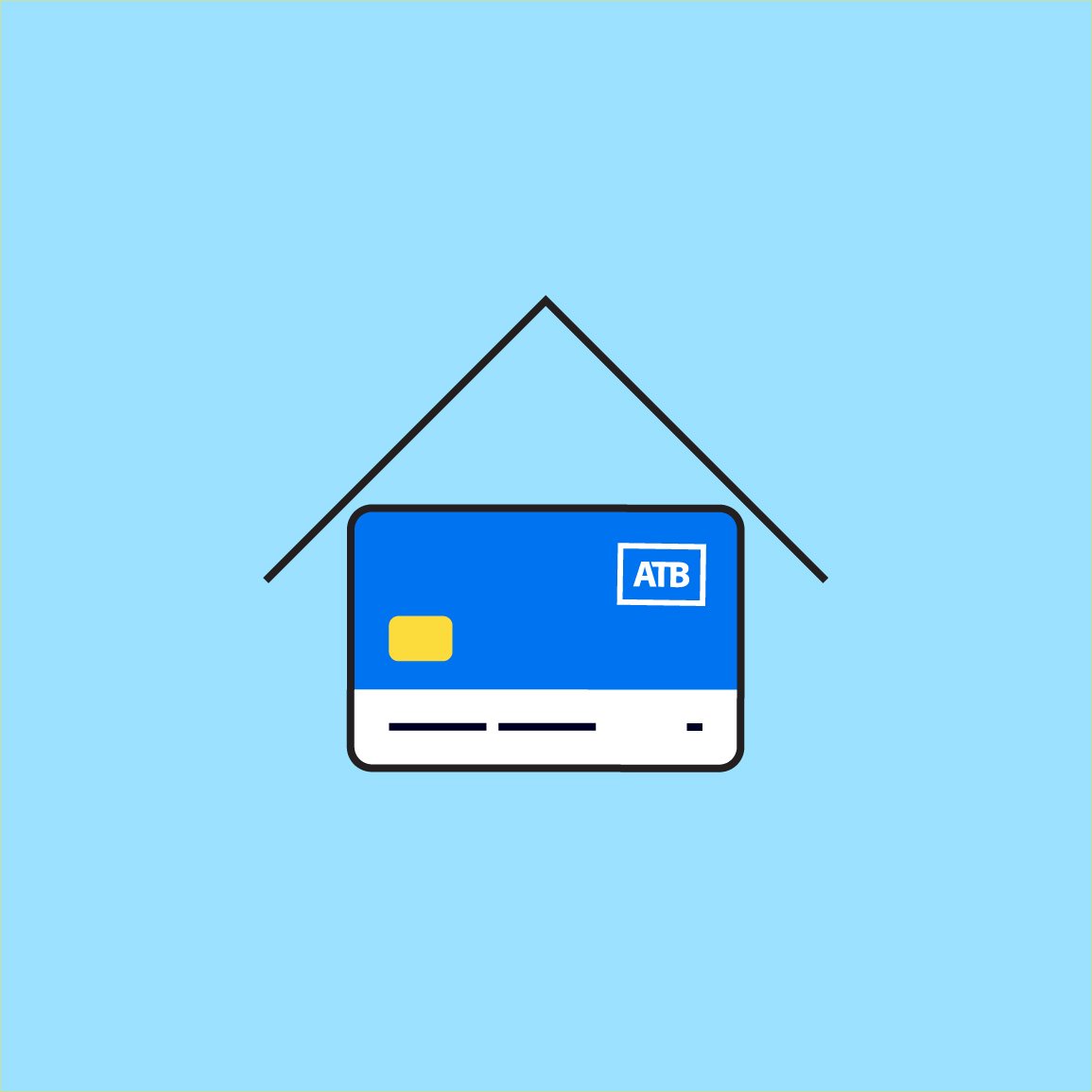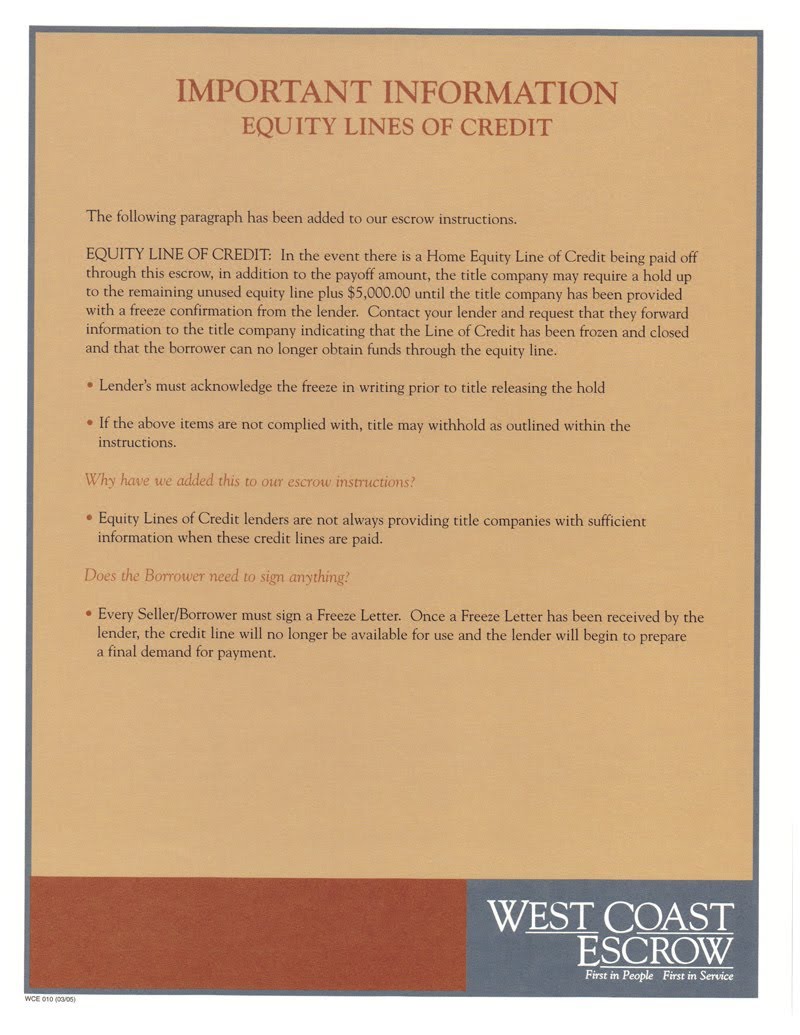Table of Content
- - Consumer Financial Protection Bureau
- Interagency Guidance on Home Equity Lines of Credit (HELOCs) Nearing Their End-of-Draw Period
- What Laws Regulate Home Equity Lenders?
- The Difference Between HELOCs and Home Equity Loans
- What special protections are available for high-cost mortgages and higher-priced mortgages?
- What’s a home equity line of credit?
- Safeguards and Protections for HELOCs
If the amount disclosed under paragraph of this section is equal to the amount disclosed under paragraph of this section a statement of that fact. Estimated taxes, insurance, and assessments. A reference to the disclosure required by paragraph of this section. Mortgage insurance case number.
Costs that are not paid from closing funds but that would otherwise be disclosed in the table required pursuant to paragraph of this section, should be marked with the phrase "Paid Outside of Closing" or the abbreviation "P.O.C." and include the name of the party making the payment. A description and the amount of any additional items which have not yet been paid and which the consumer is expected to pay after the real estate closing, but which are attributable in part to a period of time prior to the real estate closing. Liability after foreclosure.
- Consumer Financial Protection Bureau
The actuarial life expectancy of the consumer to become obligated on the reverse mortgage transaction (as of that consumer's most recent birthday). In the case of multiple consumers, the period shall be the actuarial life expectancy of the youngest consumer (as of that consumer's most recent birthday). The total loan amount for an open-end credit plan is the credit limit for the plan when the account is opened.

The HELOC market shrank to a fraction of the 2005 high in the wake of the Subprime Mortgage Meltdown but has risen steadily ever since. Home equity lines of credit are, as their name says, simply lines of credit that are secured by a portion of the equity that you have accumulated in your home. In most cases, you can borrow up to 85% of the value of your home minus the amount of your primary mortgage.
Interagency Guidance on Home Equity Lines of Credit (HELOCs) Nearing Their End-of-Draw Period
The creditor permits the consumer to shop for the third-party service, consistent with paragraph of this section. The frequency of interest rate and payment changes. The fact that the creditor has or will acquire a security interest in the property purchased as part of the transaction, or in other property identified by item or type. The dollar amounts of the largest and smallest payments in the series. An example of the payment terms that would result from an increase.

As an alternative to the brief identification for sale or nonsale credit, the creditor may disclose a number or symbol that also appears on the receipt or other credit document given to the consumer, if the number or symbol reasonably identifies that transaction with that creditor. The savings estimate for repayment in 36 months, as described in Appendix M1 to this part. The savings estimate for repayment in 36 months must be rounded either to the nearest whole dollar or to the nearest cent, at the card issuer's option. The account balance outstanding at the beginning of the billing cycle.
What Laws Regulate Home Equity Lenders?
Appraisals required--In general. Except as provided in paragraph of this section, a creditor shall not extend a higher- priced mortgage loan to a consumer without obtaining, prior to consummation, a written appraisal of the property to be mortgaged. The appraisal must be performed by a certified or licensed appraiser who conducts a physical visit of the interior of the property that will secure the transaction. For an open-end credit plan,prepayment penalty means a charge imposed by the creditor if the consumer terminates the open-end credit plan prior to the end of its term, other than a waived, bona fide third-party charge that the creditor imposes if the consumer terminates the open-end credit plan sooner than 36 months after account opening.
The disclosures required by paragraph of this section shall be made clearly and conspicuously and shall be grouped together and segregated from all unrelated information. The disclosures may be provided on the application form or on a separate form. The disclosure described in paragraph , the itemization of third-party fees described in paragraph , and the variable-rate information described in paragraph of this section may be provided separately from the other required disclosures. A closed-end consumer credit transaction secured by a dwelling or real property.
The Difference Between HELOCs and Home Equity Loans
If you are just going to run your credit cards back up by buying luxury goods and perishable items such as expensive meals, then you can quickly find yourself upside down on a monthly basis, as you won’t be able to make your HELOC payment on top of your other credit card payments. Effective HELOC portfolio management includes analyzing the portfolio by segment using criteria such as product type, credit risk score, loan-to-value ratio, debt-to-income ratio, property type, geographic area, and lien position. In addition, you are encouraged to perform stress tests or sensitivity analyses on your HELOC portfolios.

In describing how the applicable rate will be determined, the card issuer must identify the type of index or formula that is used in setting the rate. The value of the index and the amount of the margin that are used to calculate the variable rate shall not be disclosed in the table. A disclosure of any applicable limitations on rate increases shall not be included in the table. Deferred interest or similar transactions. The disclosure provided pursuant to this paragraph must be substantially similar to Sample G--18 in Appendix G to this part. Changes provided for in agreement.
The principal scheduled to be paid through the end of the 60th month after the due date of the first periodic payment, expressed as a dollar amount, along with the statement "Principal you will have paid off." The sum of the amounts disclosed under paragraphs through of this section labeled "Cash to Close." Under the subheading "Total Other Costs," the sum of the subtotals disclosed pursuant to paragraphs through of this section. Item descriptions and ordering.

This crisis led many lenders to freeze, suspend, reduce or restrict their borrowers' HELOCs in order to avoid further losses and foreclosures. While these restrictions were eventually lifted as the economy recovered in subsequent years, this effectively "yanked the carpet" out from under the financial plans of many borrowers, who were counting on these loans to pull them through tough economic times. This crisis led many lenders to freeze, suspend, reduce or restrict their borrowers’ HELOCs in order to avoid further losses and foreclosures.
Creditors may use any other computation tool in determining the annual percentage rate if the rate so determined equals the rate determined in accordance with Appendix J to this part, within the degree of accuracy set forth in paragraph of this section. As a general rule, the annual percentage rate shall be considered accurate if it is not more than 1/8 of 1 percentage point above or below the annual percentage rate determined in accordance with paragraph of this section. The type and amount of any adjustment to the index, including any margin and an explanation that the margin is the addition of a certain number of percentage points to the index, and any application of previously foregone interest rate increases from past interest rate adjustments. Any other changes to loan terms, features, or options taking effect on the same date as the interest rate adjustment, such as the expiration of interest-only or payment-option features. The total charges imposed by the creditor in connection with the assumption. A reduction in the annual percentage rate with a corresponding change in the payment schedule.

FHA. If the loan is insured by the Federal Housing Administration, the creditor shall disclose that the loan is an "FHA." If the loan is not guaranteed or insured by a Federal or State government agency, the creditor shall disclose that the loan is a "Conventional." For each type of transaction, if the originator presents to the consumer more than three loans, the originator must highlight the loans that satisfy the criteria specified in paragraph of this section. The natural person, estate, or trust provides seller financing for the sale of only one property in any 12-month period to purchasers of such property, which is owned by the natural person, estate, or trust and serves as security for the financing. The invoice may recite such prices and charges on an itemized basis or by stating an aggregate price or charge, as appropriate, for each category. Receipt no earlier than five years after consummation of a consumer's request to cancel the escrow account.
If the revised version of the disclosures required under paragraph of this section is not provided to the consumer in person, the consumer is considered to have received such version three business days after the creditor delivers or places such version in the mail. The term "step-rate mortgage" means a transaction secured by real property or a dwelling for which the interest rate will change after consummation, and the rates that will apply and the periods for which they will apply are known at consummation. The dollar amount of the increase in the loan's principal balance if the consumer makes only the minimum required payments for the maximum possible time and the earliest date on which the consumer must begin making fully amortizing payments, assuming that the maximum interest rate is reached at the earliest possible time. The sum of the amounts disclosed under paragraphs and of this section or and of this section, as applicable, labeled as "total estimated monthly payment."


